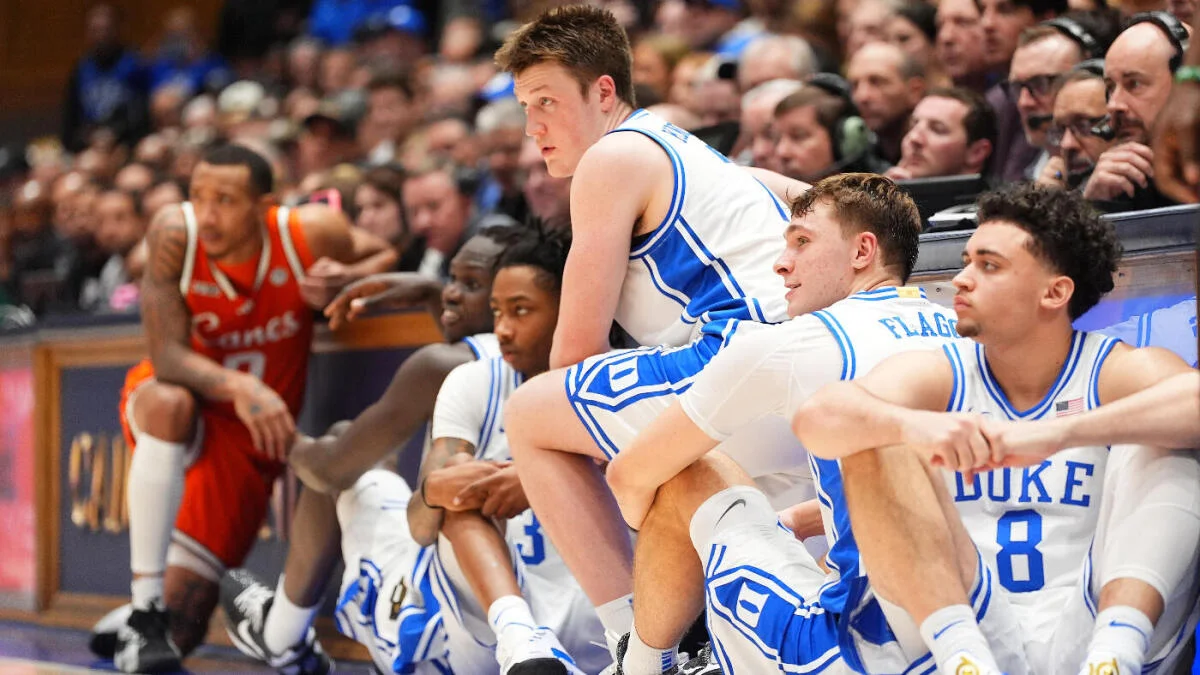The winds of change are sweeping through Durham, North Carolina. For the 2025–2026 collegiate basketball season, the Duke Blue Devils are undergoing a seismic transformation that has the attention of every college hoops fan in America. Once defined by experience and upperclassman leadership, the Blue Devils are now embracing an identity forged through a bold youth movement. Fueled by one of the most stacked recruiting classes in recent memory, and impacted by a string of key transfer portal decisions, Duke has executed a dramatic power transfer—one that could redefine the program’s trajectory for years to come.
The transformation began the moment Duke’s 2024–2025 season ended in the NCAA Tournament’s second weekend. Though it was a respectable campaign, expectations were sky-high following Cooper Flagg’s meteoric freshman rise. The Blue Devils showed promise but ultimately fell short of a Final Four. Within days of the loss, Duke’s locker room looked entirely different. Multiple veteran players entered the transfer portal, while others declared for the NBA Draft. In the eyes of many, Duke was in a moment of uncertainty—but within the halls of Cameron Indoor Stadium, it was all part of the plan.
Jon Scheyer and his coaching staff wasted no time replenishing the roster. They leaned into what has become a hallmark of modern Duke basketball: elite recruiting. The Blue Devils brought in a jaw-dropping freshman class headlined by top-five national recruits, including 6-foot-9 forward Koa Peat, scoring phenom Isiah Harwell, dynamic point guard Darius Acuff Jr., and two-way standout Caleb Wilson. All five-star talents. All expected to contribute immediately. This class didn’t just fill holes—it created a new foundation.
At the center of this shift is Peat, a bruising yet skilled forward from Arizona who can play inside and out. His ability to defend multiple positions while also facilitating offense in transition makes him an ideal modern-day power forward. Peat has drawn comparisons to former Duke greats like Zion Williamson and Paolo Banchero—not just because of his talent, but because of his immediate potential to dominate at the college level.
Alongside Peat is Harwell, an electrifying guard whose confidence and shot-making have turned heads throughout summer workouts. Harwell is a walking bucket, capable of taking over games from the perimeter and creating opportunities for others. His game is mature beyond his years, and he has quickly earned the trust of the coaching staff.
Acuff Jr. might be the most important piece of all. A true floor general with a high basketball IQ, Acuff brings poise, leadership, and a fast-paced style that matches Scheyer’s offensive system. His unselfishness complements the rest of the roster, and his ability to read defenses and make the right play under pressure will be crucial as Duke navigates a grueling ACC schedule.
Wilson, a 6-foot-10 hybrid forward, brings elite length, athleticism, and versatility. He has the tools to guard positions one through five and has already shown flashes of brilliance in offseason scrimmages. With so many young players on the court, defense and energy will be critical—Wilson provides both in abundance.
This infusion of young talent did not come without a cost. Veterans who had once shouldered the team’s responsibilities—players like Tyrese Proctor, Mark Mitchell, and Jared McCain—either declared for the NBA or opted for fresh starts elsewhere via the portal. Duke fans had grown familiar with these names, and their departure marked the end of a chapter. But the transition was swift and definitive.
Duke did manage to retain a few key returning players, most notably sophomore big man Sean Stewart, who is expected to take a leap in production and leadership. His athleticism and rim protection will be essential in anchoring a team that, despite its talent, remains relatively inexperienced. Stewart’s decision to stay was a major victory for Scheyer, providing much-needed continuity and toughness in the frontcourt.
The shift at Duke isn’t just about players; it’s about philosophy. Scheyer, now in his fourth season as head coach, has shown a willingness to adapt. Where Mike Krzyzewski once relied on seniors and developed talent, Scheyer has leaned fully into the one-and-done era and the nuances of roster construction in the transfer portal age. But what separates Scheyer from some of his peers is how he balances recruiting hype with accountability. No one is handed a starting role. Every spot must be earned.
That said, there’s no denying that the freshmen have arrived with expectations. Flagg, who opted to return for a sophomore season despite massive NIL offers and NBA buzz, will act as the veteran among this sea of elite newcomers. He is the bridge between the old and new, the connective tissue that holds this power transfer together. His leadership will be tested, but his presence provides Duke with the rare advantage of having an All-American talent who already understands the pressure and spotlight that comes with wearing the Blue Devil jersey.
This new-look Duke team will be fast. They’ll play with pace, space the floor, and defend aggressively. Scheyer is tailoring the offense to suit his younger players’ strengths, emphasizing transition opportunities and unselfish ball movement. Conditioning has become a major focus, as the coaching staff wants to ensure the team can run for 40 minutes at full throttle. There will be growing pains, especially early in the season when experience matters most. But the upside? Arguably unmatched.
There are few programs that could afford to experience such a high level of roster turnover and still emerge as a national title contender—but Duke is one of them. The transfer portal era has changed college basketball forever. Power isn’t necessarily retained through returning seniors anymore. It shifts in cycles, depending on who can land the next generation of stars and how quickly they can be molded into winners. Duke is proving it can master that model better than almost anyone.
As the 2025–2026 season approaches, all eyes will be on Durham. The questions will come fast: Can these freshmen live up to the hype? Can Scheyer harness their talent and create cohesion? Will this be the next great Duke team—or just another rebuilding year masquerading as a contender?
Those answers will arrive soon enough. For now, what just happened at Duke is clear: the power has shifted. The baton has been passed from the veterans to the prodigies. A new era has begun, and with it comes the same Duke ambition—cutting down nets in March and redefining what it means to be the standard in college basketball.



